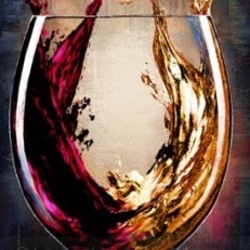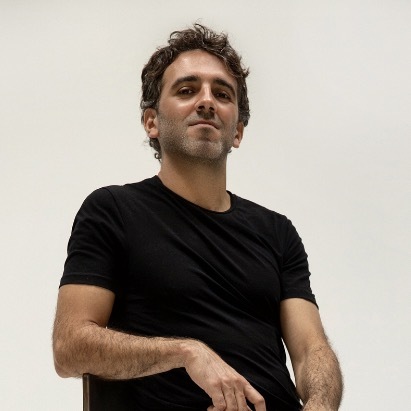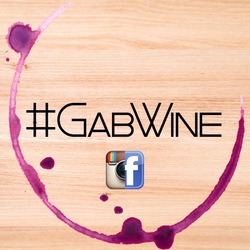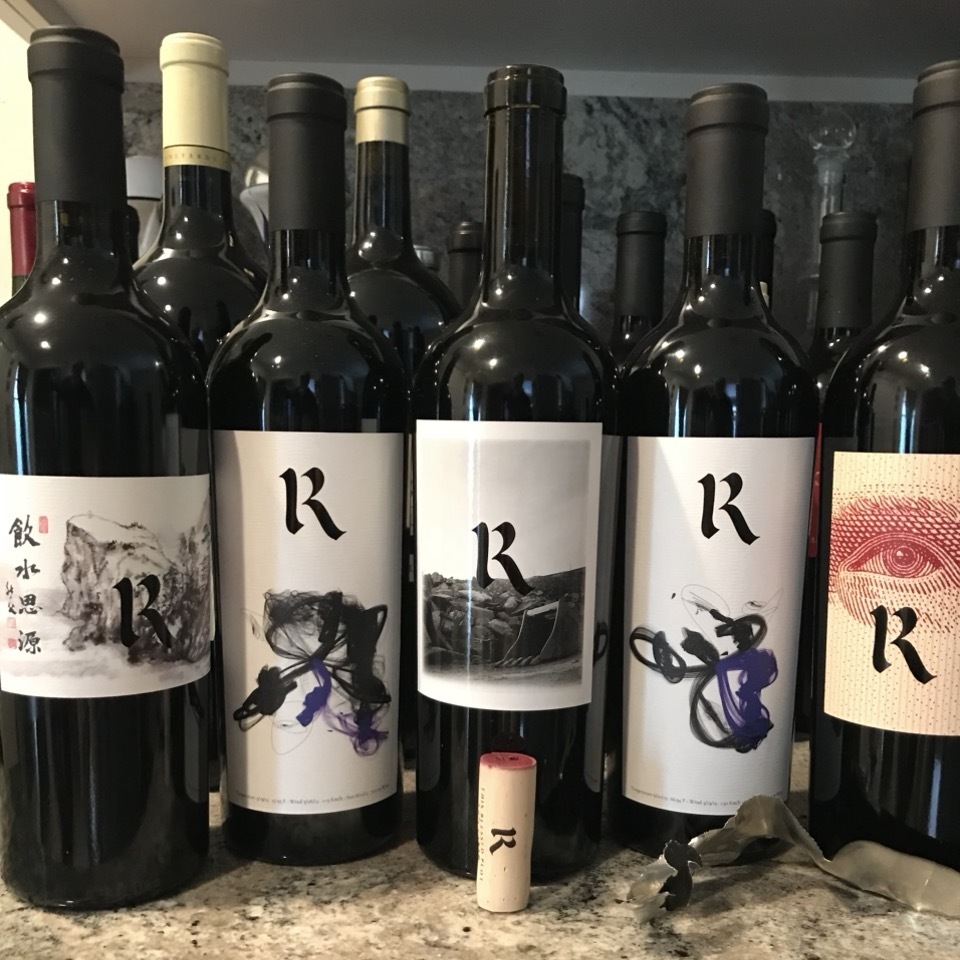Dans La Region De Production
Le Riche
Stellenbosch Cabernet Sauvignon 2016
for me it has its own style of both relatively sharp acidity & slightly faded fruitfulness, like Grand Reserva. it seems it needs more time like at least 3-5yrs for matured pleasant cedar and forest like aromas.
PRODUCTION
Fruit is sourced from a variety of sites ranging from the sandy gravel soils of the Firgrove and Raithby ward to sandy/loamy granite soils of the Jonkershoek ward. In essence, it is a blend of Stellenbosch Cabernets showing the variety of terroirs to be found, all harvested by hand at optimal ripeness. Five days fermentation in open concrete tanks with temperature control and regular manual plunging and pump-overs. The malolactic fermentation was carried out in lined concrete tanks after which the wine was transferred to 225L French oak barrels (25% new oak) where it was matured for 20 months. — 5 years ago
Ponzi Vineyards
Arneis 2016
Amazing dry white that has limited production in the U.S. Thus varietal hails from the Piedmont region originally. Ponzi planted a plot back in 1990 and each year it produces this amazing wine. Peach, almonds. Some pear on the nose. Lovely aperitif or with appetizers. Small production so if you can find it...get it! — 7 years ago
Domaine de Fenouillet
Terres Blanches Beaumes-de-Venise Rouge 2015
Dark and brooding but still easy to drink, this this Beaumes de Venise Cru shows the potential of the region. Grenache/Syrah/Mourvedre, 14.5% ABV
Production details: 100% destemmed, indigenous yeast fermentation in concrete tanks, daily pumpovers and punching down during maceration, 1-2 rack & returns during fermentation, no chaptalization. Maturation 18 months in concrete, no fining, pre-filtration at 5g, SO2 at harvest abd bottling 2g/hl. Total SO2 target 40-50mg/L. — 7 years ago
Gaston Chiquet
Special Club Brut Champagne Blend 2007
This is Gaston’s Special Club. What does it mean when a Champagne is labeled as Special Club?
The Special Club, or Club Trésors de Champagne, was originally founded in 1971 by 12 of the oldest families of the Champagne region. Since then, the club has grown to include 29 producers committed to excellence in all aspects of production. This exclusive membership is only open to Recoltant Manipulants (a French designation for a producer of grower Champagne). Champagnes must be produced, bottled and aged at the member’s estate. The Special Club Champagnes represent the tête de cuvée (a premier bottling often carrying a vintage date) selection for each member.
Special Club Champagne designation means they are only made in outstanding vintages from grapes harvested from member’s own vineyards. Each producer must submit his wine to two blind tastings panels of esteemed oenologists and wine professionals. The still wines (vins clairs) are tasted first and if approved may be bottled in the uniquely-shaped Special Club bottle before undergoing secondary fermentation.
After a minimum of three years aging on lees, the wines are tasted again for final approval.
On the nose; green apple, bruised Bosc pear, touch of golden apple, pineapple, cream soda, light citrus, sea shells/spray, brioche, gray volcanic minerals, soft chalk, spring flowers & citrus blossoms.
The palate is soft, delicate, subtly rich with micro oxygenation. Green apple, bruised Bosc pear, bruised golden apple, pineapple, cream soda, light citrus, sea shells/spray, brioche, gray volcanic minerals that have teeth and dig deep into your palate, soft powdery chalk, spring flowers & citrus blossoms.
Photos of; the house of Gaston Chiquet, cellar-hand hand riddling bottles, Owner/Winemaker Nicolas Chiquet inspecting bottles and one of their Grand Cru Vineyard.
Producer notes...Nicolas farms 23 heactares in the Valle de la Marne in the villages of Ay, Dizy, Hautvillers and Mareuil-sur-Ay. All of the fruit (including that which is used in the non-vintage cuvee) comes from premier and grand cru grapes. Nicolas does not employ any oak aging at Gaston Chiquet; he believes that concentration, fruit maturity and malolactic fermentation impart enough body and texture to make aging in barrel unnecessary.
The vineyards are planted to equal (forty percent each) parts chardonnay, pinot meunier and twenty percent are planted to pinot noir. Gaston-Chiquet. He also produces a vintage dated chardonnay from 5 parcels on the western side of the grand cru village of Ay. Usually recognized as a grand cru village for pinot noir, these vines of chardonnay were planted in Ay in the 1930s.
In 1919, two brothers, Fernand and Gaston Chiquet winemakers came together to create their house Chiquet Brothers. They were ‘pioneers’ in Champagne, the very first winemakers to take the initiative, bold at the time, to keep their grapes, turn them into Champagne and sell their own wine. Nicolas Chiquet planted his first vines in 1746, and since then eight generations have have managed their house. Gaston Chiquet registered the company in 1935 and expanded the property with land in Aÿ, Cumières and Hautvillers. Gaston Chiquet is best known for making the only blanc de blancs from the Pinot village of Aÿ. Aÿ was the big name in the area long before wines became sparkling, and many were the kings and popes who counted Vin d’Aÿ as their favorite wine. The vineyards slope down steeply to the village by the Marne River, and the best locations are just over the town, sheltered from the wind and with maximum exposure to the sun. — 7 years ago

Truchard
Carneros Roussanne 2014
A small winery in the Carneros region of Napa managed by Tony and Jo Ann Truchard successfully growing grapes for over 40 years. Sits on French oak (20% new) for 6 months. Aromas of tropical fruits and sweet honey. On the palate pineapple and apricot flavors, subtle spice and fresh acidity. Lingering finish ending flinty with citrus mineral tones. Small production 1900 cases, must try. Nice! — 8 years ago
Arkenstone
Coliseum Block Cabernet Sauvignon 2013
One of the casualties from the Napa fires in Atlas Peak region. Coliseum Block burnt to a crisp. (Bottom right photo). This is one of Arkenstone’s ventures outside of Howell Mountain. Winemaker Sam Kaplan says ‘hold on all of your stock because it will take a while to get this vineyard back to full production’. Sad to hear because Coliseum Block was full of depth in color, texture and complexity. — 8 years ago
Domaine des Huards (Michel Gendrier)
Envol Cheverny Pinot Noir et Gamay Blend 2018
PN Gamay Blend #1: A nice biodynamic juice that honours the pinot noir, (by bringing a classy mouth) and the gamay, generous and flowery. The dress is dark but translucent. Open nose, very fruity. In the mouth the material is velvety, combining freshness and roundness, in a balance that makes this wine remarkable in its price range. Nice entry cuvée by an interesting domain of Loire region.
Un beau jus qui fait honneur au pinot noir, (en apportant une certaine tenue) et au gamay, généreux et accessible. La robe est violine sombre mais translucide. Le nez ouvert est très fruité. En bouche la matière est veloutée, associant fraîcheur et rondeur, dans un équilibre qui rend ce vin remarquable dans sa gamme de prix. Belle entrée en matière d’un super domaine. — 4 years ago
Bertani
Amarone della Valpolicella Classico Corvina Blend 2000
A good vintage for the whole region, best displayed in a glass, unlike Mazzi. The bouquet clearly indicates that this wine could have become Recioto someday 😄. Compared to other samples, the aroma is more fruity. There is no spice in taste, but in this case such circumstances cannot be considered a disadvantage. Long time in oakis felt but not dominant due to the traditional approach to Amarone production. There are some cherry, chocolate, oak, brown sugar, black licorice. — 6 years ago
Kirkland Signature
Brut Champagne Blend
Costco’s Kirkland Signature Champagne Brut. Honestly, super impressive. A blend of Chardonnay, Pinot Noir and Pinot Meunier from the grand cru village of Verzenay in the Champagne region of France. So given the fact that real “Champagne” only comes from France and has strict rules about its production, it’s spectacular that Costco has gone all out with making a great tasting affordable Champagne.
All that being said, I’ve never been the best at pin-pointing Champagne notes. I get a pale, straw taste that’s crisp and refreshing. Will definitely be purchasing again. — 6 years ago
Louis Bovard
Salix Chenin St. Saphorin 2016
Color : White
Wine estate : Domaine Louis Bovard
Designation : Saint-Saphorin
Name : Salix Chenin Blanc
Country : Switzerland
Vivino : 4.5/5
Note : Louis Bovard remains the boss in the Vaudoise region with this magnificent Salix. A pale yellow color, a mineral nose with a touch of citrus. On the palate, happiness, joy and wonder. More seriously, a nice roundness with salty and fruity notes. Just magic!
----------
Louis Bovard reste le patron dans La région Vaudoise avec ce magnifique Salix. Une robe jaune pâle, un nez minéral avec une touche d’agrumes. En bouche, le bonheur, la joie et l’émerveillement. Plus sérieusement, une belle rondeur avec des notes salines et fruités. Juste magique !
----------
👍🏻Vivino, FB : GabWine | IG : gabriel_dvl 🥂 — 7 years ago
Turk Mountain Vineyards
La Tour d'Afton 2015
A riper and brighter vintage than one tasted a few years ago. I don’t really understand the low ratings. Quite honestly, if this was natural wine from a crusty old Slovenian farmer in a mountain town nobody has ever heard of, or a 9th generation hipster Andorran-French winemaker using only a walnut press to make the wine, the wine writers/bloggers would be all over it. This is real, natural wine. Certainly not perfect, and definitely unique. Floral and grapey with decent tannins and acidity. Medium finish. Tiny production of 1500 bottles. 32 bucks. Totally worth it, IMHO. — 7 years ago
Château Lynch-Bages
Grand Cru Classé Pauillac Cabernet Sauvignon Blend 2000
The 2000 is delicious but, it is evolving at a glacial pace. Out of magnum.
On the nose, touch of barnyard, glycerin, ripe; blackberries, dark cherries, black raspberries, plum, strawberries & cherries. Vanilla, dry clay, limestone, river stones, just a touch of pyrazines & bandaid, dark,,turned, moist earth, dry grass and dry & fresh dark florals.
The body is full, round & sexy. Dry softened, sweet tannins. ripe; blackberries, dark cherries, black raspberries, plum, strawberries & cherries. Vanilla, dry clay, limestone, river stones, just a touch of pyrazines & bandaid, fresh tobacco leaf, saddle-wood, dry underbrush, dark, turned, moist earth, dry grass and dry & fresh dark florals. The acidity is magnificent. The structure, tension, length and balance are sensational. The finish is drop dead gorgeous. I’d still hold mine another 5 years as long as you have 3-4 bottles for more 5 year increments.
Photos of, their Estate vines, Clyde Beffa-Owner of K&L Wine Merchants, Owner of Chateau Lynch Bages - Jean-Michel Cazes, guests of the dinner and a sunset view from their Estate.
Producer notes and history...Lynch Bages takes its name from the local area where the Chateau is located in Bages. The vineyard of what was to become Lynch Bages was established and then expanded by the Dejean family who sold it in 1728 to Pierre Drouillard.
In 1749, Drouillard bequeathed the estate to his daughter Elizabeth, the wife of Thomas Lynch. This is how the estate came to belong to the Lynch family, where it remained for seventy-five years and received the name Lynch Bages. However, it was not always known under that name.
For a while the wines were sold under the name of Jurine Bages. In fact, when the estate was Classified in the 1855 Classification of the Medoc, the wines were selling under the name of Chateau Jurine Bages. That is because the property was owned at the time by a Swiss wine merchant, Sebastien Jurine.
In 1862, the property was sold to the Cayrou brothers who restored the estate’s name to Chateau Lynch family.
Around 1870, Lou Janou Cazes and his wife Angelique were living in Pauillac, close to Chateau Pichon Longueville Baron. It was here that Jean-Charles Cazes, the couple’s second son, was born in 1877.
In the 1930’s, Jean-Charles Cazes, who was already in charge of Les-Ormes-de-Pez in St. Estephe agreed to lease the vines of Lynch Bages. By that time, the Cazes family had history in Bordeaux dating back to the second half of the nineteenth century.
This agreement to take over Lynch Bages was good for both the owner and Jean Charles Cazes. Because, the vineyards had become dilapidated and were in need of expensive replanting, which was too expensive for the owner. However, for Cazes, this represented an opportunity, as he had the time, and the ability to manage Lynch Bages, but he lacked the funds to buy the vineyard.
Jean-Charles Cazes eventually purchased both properties on the eve of the Second World War. Lynch Bages and Les-Ormes-de-Pez have been run by the Cazes family ever since. In 1988, the Cazes family added to their holdings in Bordeaux when they purchased an estate in the Graves region, Chateau Villa Bel Air.
Around 1970, they increased their vineyards with the purchase of Haut-Bages Averous and Saussus. By the late 1990’s their holdings had expanded to nearly 100 hectares! Jean-Michel Cazes who had been employed as an engineer in Paris, joined the wine trade in 1973. In a short time, Jean Michel Cazes modernized everything at Lynch Bages.
He installed a new vat room, insulated the buildings, developing new technologies and equipment, built storage cellars, restored the loading areas and wine storehouses over the next fifteen years. During that time period, Jean Michel Cazes was the unofficial ambassador of not just the Left Bank, but all of Bordeaux. Jean Michel Cazes was one of the first Chateau owners to begin promoting their wine in China back in 1986.
Bages became the first wine sent into space, when a French astronaut carried a bottle of 1975 Lynch Bages with him on the joint American/French space flight!
Beginning in 1987, Jean-Michel Cazes joined the team at the insurance company AXA, who wanted to build an investment portfolio of quality vineyards in the Medoc, Pomerol, Sauternes, Portugal and Hungary.
Jean-Michel Cazes was named the director of the wine division and all the estates including of course, the neighboring, Second Growth, Chateau Pichon Baron.
June 1989 marked the inauguration of the new wine making facilities at Lynch Bages, which was on of their best vintages. 1989 also marked the debut of the Cordeillan- hotel and restaurant where Sofia and I had one of our best dinners ever. A few years after that, the Village de Bages with its shops was born.
The following year, in 1990, the estate began making white wine, Blanc de Lynch Bages. In 2001, the Cazes family company bought vineyards in the Rhone Valley in the Languedoc appellation, as well as in Australia and Portugal. They added to their holdings a few years later when they purchased a vineyard in Chateauneuf du Pape.
In 2006, Jean-Charles Cazes took over as the managing director of Chateau Lynch Bages. Jean-Michel Cazes continues to lead the wine and tourism division of the family’s activities. Due to their constant promotion in the Asian market, Chateau Lynch Bages remains one of the strongest brands in the Asian market, especially in China.
In 2017, Chateau Lynch Bages began a massive renovation and modernization, focusing on their wine making, and technical facilities. The project, headed by the noted architects Chien Chung Pei and Li Chung Pei, the sons of the famous architect that designed the glass pyramid for the Louvre in Paris as well as several other important buildings.
The project will be completed in 2019. This includes a new grape, reception center, gravity flow wine cellar and the vat rooms, which will house at least, 80 stainless steel vats in various sizes allowing for parcel by parcel vinification.
The new cellars will feature a glass roof, terraces with 360 degree views and completely modernized reception areas and offices. They are not seeing visitors until it’s completion.
In March, 2017, they purchased Chateau Haut Batailley from Françoise Des Brest Borie giving the Cazes family over 120 hectares of vines in Pauillac!
The 100 hectare vineyard of Lynch Bages is planted to 75% Cabernet Sauvignon, 17% Merlot, 6% Cabernet Franc and 2% Petit Verdot. The vineyard has a terroir of gravel, chalk and sand soils.
The vineyard can be divided into two main sections, with a large portion of the vines being planted close to the Chateau on the Bages plateau. At their peak, the vineyard reaches an elevation of 20 meters. The other section of the vineyard lies further north, with its key terroir placed on the Monferan plateau.
They also own vines in the far southwest of the appellation, next Chateau Pichon Lalande, on the St. Julien border, which can be used in the Grand Vin. The vineyard can be split into four main blocks, which can be further subdivided into 140 separate parcels.
The average age of the vines is about 30 years old. But they have old vines, some of which are close to 90 years old.
The vineyards are planted to a vine density of 9,000 vines per hectare. The average age of the vines is about 30 years old. But they have old vines, some of which are close to 90 years old.
Lynch Bages also six hectares of vine are reserved for the production of the white Bordeaux wine of Chateau Lynch Bages. Those vines are located to the west of the estate. They are planted to 53% Sauvignon Blanc, 32% Semillon and 15% Muscadelle. On average, those vines are about 20 years of age. Lynch Bages Blanc made its debut in 1990.
To produce the wine of Chateau Lynch Bages, vinification takes place 35 stainless steel vats that vary in size. Malolactic fermentation takes place in a combination of 30% French, oak barrels with the remainder taking place in tank.
The wine of Chateau Lynch Bages is aged in an average of 70% new, French oak barrels for between 12 and 15 months. Due to the appellation laws of Pauillac, the wine is sold as a generic AOC Bordeaux Blanc, because Pauillac does not allow for the plantings of white wine grapes.
For the vinification of their white, Bordeaux wine, Blanc de Lynch-Bages is vinified in a combination of 50% new, French oak barrels, 20% in one year old barrels and the remaining 30% is vinified in vats. The wine is aged on its lees for at least six months. The white wine is sold an AOC Bordeaux wine.
The annual production at Lynch Bages is close to 35,000 cases depending on the vintage.
The also make a 2nd wine, which was previously known as Chateau Chateau Haut Bages Averous. However, the estate changed its name to Echo de Lynch Bages beginning with the 2007 vintage. The estate recently added a third wine, Pauillac de Lynch-Bages.
— 7 years ago


Domaine de Chevalier
Clos des Lunes Lune d'Argent Bordeaux Blanc Sec Sémillon-Sauvignon Blanc Blend 2015
2015 vintage. A project started in 2011 by Olivier Bernard (of Domaine de Chevalier fame) in Sauternes from vineyards in 3 different terroirs (Sauternes, Barsac and Bommes). Contrary to classic white Bordeaux, Sémillon is king here, reflecting in this 70% Sémillon and 30% Sauvignon blanc blend, aged in French oak. Lune d'Argent is the middle range of the estate and the heart of the production. It stands for amazing value. Drinking beautifully now, but I suspect this will age gracefully for at least another 5 years. Light brilliant yellow. Very attractive nose combining exotic fruit with minerality, flowers and brioche. Juicy fresh pineapple and grapefruit, balanced mouth-watering acidity and perfectly integrated oak. This shows the potential of great dry white wines in the Sauternes region, where the famous sweet wines are sadly suffering from low demand in lethal combination with high production costs. Grab this one by the case at only 17,90 euros. Abv. 13%. — 5 years ago
Domaine Romaneaux-Destezet (Hervé Souhaut)
La Souteronne Vin de Pays de l'Ardèche Gamay
Another gem from Herve Souhaut. Limited production on this Ganay from the Rhone region not know for Gamay. 60-80 yo vines. Very different from what im used to in Gamay. Was still very fruity but also had peppery smoky notes and maybe even some herbs. Dark fruit for sure. Loved it. — 6 years ago
Clendenen Family Vineyards
The Pip Santa Maria Valley Nebbiolo 2014
#Nebbiolo is a surprisingly rare grape. Even in its native Piedmont, it accounts for only 8% of vineyard land. There are fewer than 100 hectares planted in the United States. 🕵️♂️🍇
Over 80% of prewar Italian immigrants came from Sicily and Southern Italy. Piedmont was the wealthiest and most politically dominant region. But if fortunes were reversed, could Nebbiolo have taken Primitivo/Zinfandel’s place as a grape relatively uncommon on the boot but dominant in California? 🤔🇮🇹🇺🇸
Probably not. The Nebbiolo vine is *not* for beginners. It flowers early and ripens late, making it susceptible to both spring and autumn frosts. It loves the occasional fog bath (some say the name is derived from ‘nebbia’, Italian for fog ☁️☁️☁️) but is prone to the mildew that may result from such humid conditions. Its fussiness would make Pinot Noir blush: it demands southwesterly exposure, a proper gradient, constant sun above, and fog licking at its toes. #diva
Sound anything like California’s Central Coast? 🌅
In the Santa Maria Valley, where the East-West Transverse Range bends back into the North-South Coastal Range, it’s possible. Vineyard selection still requires extreme discretion - an eye like @JimClendenen’s, perhaps.
Jim began the Nebbiolo program at the legendary #BienNacido vineyard in 1994. Production is small, but if you track down his “The Pip” Nebbiolo, it will only run you about $30. You’ll believe anything is possible when you have real California Nebbiolo of this quality come wafting out of the glass at you! 🙌🙌
🏞.“The Pip” is named after Jim’s old cellar dog Pip, a border collie. So it only seemed right to include one of our own pips! 🐈 — 6 years ago
Cantina Ar.Pe.Pe.
Riserva Buon Consiglio Grumello Valtellina Superiore Nebbiolo 2009
Small, selective production of Valtellina Superiore (Nebbiolo of the region?): elegant and earthy,, smooth, with some cherry “notes” (hate that word)...so drinkable that it was gone too soon. — 7 years ago

Edi Keber
Collio Friulano Blend 2016
Not for everyone but a thinking wine, and superb example of what careful production can achieve - tons of white flower, lime, barely ripe peach, carrying through to a textural mouthfeel with green melon, honey, mint, and anise. Perfect with a snap pea salad or asparagus preparation, goat cheese, and meaty oysters. Long finish with layers of vegetation and fruit. Bravo again to the Collio region — 7 years ago
Stag's Leap Wine Cellars
Artemis Napa Valley Cabernet Sauvignon
Dans favorite. Stag’s Leap region. Very good. — 8 years ago
Bollinger
Brut Rosé Champagne Blend
On the nose; bright cherries, ripe strawberry & cranberry reduction, black raspberries, raspberries, watermelon near the rhine, mixed orange citrus, oyster shells, baguette crust, understated volcanic minerals, chalk, saline, fresh pink roses and florals. The body is full and a shade gluey. The fruits are ripe, rich and candied/gummy in style. Bright cherries, black cherries ripe strawberry & cranberry reduction, black raspberries, raspberries, watermelon near the rhine, mixed orange citrus spray, saline, seashells, soft grey volcanic minerals, lots of grippy powdery razor sharp chalkiness, baguette crust, fresh pink roses & florals, acidity that is round and well done, understated delicate micro bubbles and a long, well balanced, rich finish. The reason why I prefer the Billecart Salmon, Ruinart & Laurent Perrier over the Bollinger is it’s a little too sweet for me. Photos of; the House of Bollinger, cellar, headstone that marks one of their vineyards and their harvest staff picking perfectly manicured rows. Producer notes and history...Bollinger has roots dating back to 1585 when the Hennequins, one of the Bollinger founding families, owned land in Cramant. Before the Bollinger house was founded in the 18th century, the Villermont family practised wine making, though not under their family name. In 1750, Villermont settled at 16 rue Jules Lobet, which would eventually become the head office for Bollinger. In 1803 Jacques Joseph Placide Bollinger was born in Ellwangen, in the kingdom of Württemberg. In 1822, he moved to Champagne and found work at the house of Muller Ruinart, which no longer exists. Many other Germans came to settle in the Champagne region, including Johann-Josef Krug and the Heidsiecks, who founded a house that would become; Charles Heidsieck, Piper Heidsieck, Veuve Clicquot and others. The Champagne house Renaudin Bollinger was founded in 1829 in Aÿ by Hennequin de Villermont, Paul Levieux Renaudin and Jacques Bollinger. The partners agreed that the Villermont name would not be used on the labels, hence the house name Renaudin Bollinger. Starting when Jacques Bollinger married Charlotte de Villermont, the house has been managed by the Bollinger family. Even though Paul Renaudin passed without an heir to his name, the label did not become solely Bollinger until the 1960s. Founder Jacques Joseph Bollinger married Charlotte de Villermont. The had a daughter, who had two sons Joseph and Georges. These sons took over the company in 1885 and began expanding the family estate by purchasing vineyards in nearby villages. The sons also developed the image of the brand, such as when Bollinger became the official supplier to the British court and received a Royal Warrant in 1884 from Queen Victoria. In 1918, Jacques Bollinger, the son of Georges, took over the company and married Emily Law de Lauriston Boubers, known as "Lily". Jacques expanded the facilities by building new cellars, purchasing the Tauxières vineyards, and acquiring the assets of another Champagne house on Boulevard du Maréchal de Lattre de Tassign, where Bollinger's offices are presently located. When Jacques Bollinger died in 1941, Lily Bollinger took over. Lilly expanded production with the purchase of even more vineyards, but is best known for traveling the world to market the brand. Bollinger was modernized under the Claude d'Hautefeuille, who acquired additional vineyards and further developed the brand internationally. Following Claude, his cousin Christian Bizot took over the Bollinger house and expanded world distribution. Their Winemaker also used several James Bond film movies to market the brand. Bollinger is fermented in oak barrels. At harvest, only the first pressing is used in the cuvée, unless the vintage is of particularly high quality, when a second pressing of Chardonnay will be used. Bollinger sells the second pressing, the tailles. Bollinger utilizes two pressing houses (Louvois and Mareuil sur Aÿ) to ensure a short distance between harvest location and pressing. When possible, grapes purchased from growers are pressed by the house. When the pressed wine arrives, the Bollinger cellar master analyzes the musts for quality, discarding and selling off those that do not meet the house standards. The first fermentation is done cru by cru, variety by variety, preserving many of the unique characteristics of the vines location. Bollinger is one of the few Champagne houses to do some first fermentation in oak barrels. Wines that will not hold up to first fermentation in wood are vinified in vats. Bollinger Champagnes usually undergo malolactic fermentation. The Grande Année 1995 did not undergo malolactic fermentation. Bollinger uses only traditional yeast. They’ve decided that new generations of yeasts (agglomerated yeasts and encapsulated yeasts) do not produce satisfactory Champagne. Vintage wine, including all wine to be used in a Grande Année, is fermented in small oak barrels, sorted according to origin and variety. Both oak and stainless steel are used for non-vintage wine. Bollinger also has the last Cooperage in Champagne. The oak barrels are all at least four years old, avoiding the transfer of tannins to the wine. The wines are only lightly filtered. All Bollinger Champagne spends a long time on its lees, contributing to the complex flavour of the wine. Though appellation d'origine contrôlée rules only require 12 months on lees for non-vintage Champagne and for vintage (NV wines, 15 months from tirage to release and vintage wines must be kept for 36 months from tirage to release), Bollinger ages their non-vintage wines three years, and the vintage wines from five to eight years. The Grande Année and R.D. Champagnes are riddled by hand. At disgorgement, Bollinger wines are given a low dosage, to maintain the balance and flavor of the wine. The company uses 6-9 grams of sugar per liter for the Special Cuvée and La Grande Année. The extra-brut R.D. is dosed between 4 and 5 grams. After dosage, the wines are aged an additional several months, resting for a minimum of three months before shipping. Bollinger owns nearly 160 hectares of vines, producing more than 60% of its supply. The vines are largely Pinot Noir, specifically clone 386. Bollinger believes this clone ensures good quality as well as highlighting characteristics of the various terroirs. The vineyards also include some rare ungrafted French vines from before the phylloxera. Bollinger owns vines all over Champagne, including the crus of Aÿ, Bouzy and Verzenay. — 8 years ago

I figured a real keyboard needed to be involved, thanks for the insight.


















Romain Fitoussi
Very nice interpretation of the gamay, balanced from one end of the tasting to the other. Blindly, we are in a triangle somewhere between Loire, Burgundy and Beaujolais (or PN from Alsace) The finish is carried by a very beautiful mineral weft unusual in this region. Nice finesse. Very good value for money/pleasure.
Très belle interprétation du gamay, équilibré d’un bout à l’autre de la dégustation. A l’aveugle, on est dans un triangle quelque entre Loire, Bourgogne et Beaujolais, (ou même un Pinot-noir alsacien). La finale est portée par une très belle trame minérale peu courante dans cette région. Belle finesse. Très bon rapport qualité/prix/plaisir. — 4 years ago